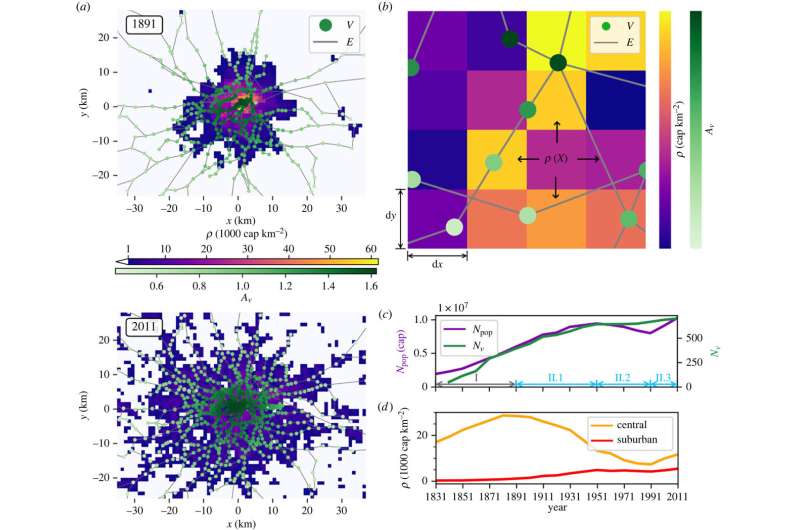April 8, 2024 report
This article has been reviewed according to Science X's editorial process and policies. Editors have highlighted the following attributes while ensuring the content's credibility:
fact-checked
peer-reviewed publication
trusted source
proofread
Modeling urban growth shows that cities develop in ways similar to cancerous tumors

A team of environmental engineers and city planners from University College London, the University of Sydney, and École Polytechnique Fédérale de Lausanne has discovered that cities grow in ways similar to the development of cancerous tumors. In their paper published in Journal of the Royal Society Interface, the group used mathematical models to explain how the city of London grew into its current state, and then applied the models to Sydney, Australia.
Prior research has shown that most modern cities began as small towns and grew over time to become much larger. In this new effort, the researchers wanted to learn more about the ways that cities grow and why they grow as they do. To that end, they used a number of mathematical models to describe how the city of London grew from a small town into a major city.
They found that London started as a small town, just a square mile in size. That size, they found, suited the people that lived there, as it allowed them to visit all parts of the town with the types of transportation available at the time—namely, walking and going on horseback. But with the arrival of train transport, people in the city began moving to its edge, hoping for a less crowded environment. And that led to more growth.
As time passed, roads allowed people to drive cars and trucks in and out of the cities, spurring even more growth and furthering the spread of the city. The researchers refer to such growth as being similar to angiogenesis, which is the process by which new blood vessels form in living creatures. They further describe such growth as similar to the way cancerous tumors grow.
To find out if other cities grow in the same ways, they applied their model to Sydney and found it was remarkably similar. They conclude that their model could be of use as towns around the world develop into cities—it could help planners in such places better understand upcoming needs.
More information: Isabella Capel-Timms et al, The angiogenic growth of cities, Journal of The Royal Society Interface (2024). DOI: 10.1098/rsif.2023.0657
Journal information: Journal of the Royal Society Interface
© 2024 Science X Network



















